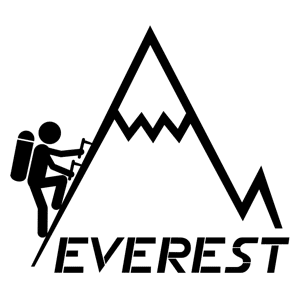We need to throw more people at it!
Rescue & Recovery | By Ian Collins | Read time minutes

There's a school of thought that when you are faced with 'Project Everest', you can climb it faster if you put more people to work on it. Of course, the Everest metaphor is a perfect example of why this approach is flawed. Although tempting, adding more people to a project in crisis is not necessarily going to help you get it back on track. Good resource management is about more than juggling your staff numbers. It is about understanding who your resources are and how to use them intelligently. It is appreciating that in many circumstances, quality is better for a project than quantity.
Resources are commonly thought to mean people, but actually they can refer to many things: money, equipment, supplies. They all have something in common: they are assets to your project.
Assets are a better description to use here as not all resources are equal in value. You might even think that experience, skill and intellect are assets in themselves. By thinking in this way, you can see straight away that different resources are going to have a different impact on your project.
Tools such as Microsoft Project will have a function called 'levelling' resources which allows you to adjust your resourcing levels to suit your project. You simply take the sum total of you resource requirements and spread them evenly across the project, and then adjust according to the ebb and flow of when you can get people available to work on it. However, because resources vary in quality this mathematically-centred approach is not always suitable. A small team of highly experienced and skilled engineers may be able to provide much greater progress to a flailing project than a larger team of less experienced engineers.
A more modern approach to resource management is to first think of your resources as assets:
- What quality and quantity of assets are available to your project?
- What are their strengths?
- What skills and knowledge do they bring to the project?
- Where can they add the most value?
Quality resources with a highly suitable skill set are best assigned to the most difficult aspects of your project. So one of your first tasks when assigning resources to your project is to assess what major delivery points you have and how you are going to achieve them. In doing this, you also look at the complexity, and it is the complexity variant which many project managers may miss but which is vitally important; it gives you the likelihood of a task being problematic, risky or late. What are your most critical points on your project - your pinch points? Which parts of your project carry the most risks?
This is where you can tackle the project with an intelligent resource management approach. You look at what resources you have and what you might be lacking. You take advantage of the strengths you have in your project team by assigning them to the areas where they will add the most value. And you use your knowledge about your resource to manage your risks. For example, if you have a complex task and a team that lack experience in this area, perhaps you can look at whether you can expand your team, or bring in an outsider with some specialist knowledge. This may cost money. But by carrying out this assessment so early on in your project, you can make a business case for why you need to do this.
So how do you make an assessment of what value each of your resources (or 'assets') has on a project? There are several ways to do this. If you have worked with the team before, this is fairly straightforward, as you will have past experience that helps to assess strengths and weaknesses. If you have not worked with the team before, it may be a more difficult task. However, you can still look at past projects this team have completed: who was involved, how successful they were. You can also spend time early on talking to your team and finding out as much as you can about them. Finding out their worries, concerns and their past experiences will tell you a lot.
Good resource management is about knowing your strengths and weaknesses on your project and facing them head on. It is a fine balancing act to assigning your resources where they really need to be, but if done well it may be the difference between achieving success, or managing a project that is fraught with problems.
KeyedIn™ Solutions is focused on helping organisations simplify processes, improve performance and drive results. The company's Cloud-based software systems not only offer greater flexibility, but effectively scale as business needs dictate and can be implemented quickly, delivering a measurable ROI in months, or even years ahead of on-premise systems. And KeyedIn offers a true SaaS model, making its solutions affordable for every budget. Find out more about KeyedIn's resource management software solutions or visit www.keyedin.com to find a solution for your businesses needs.